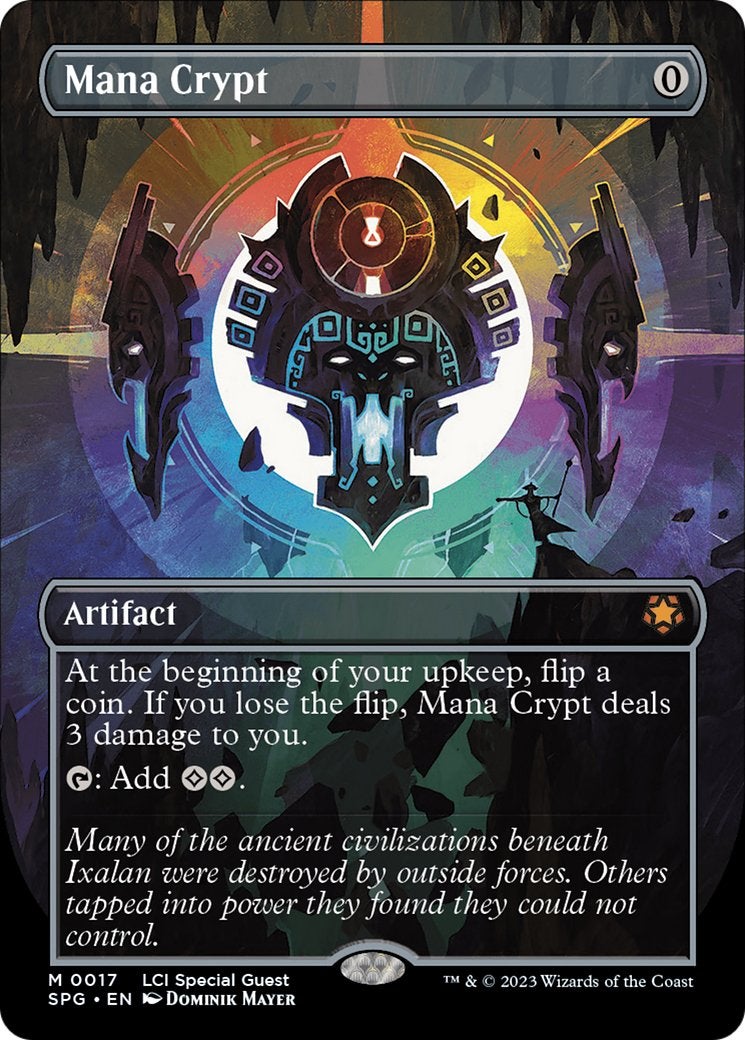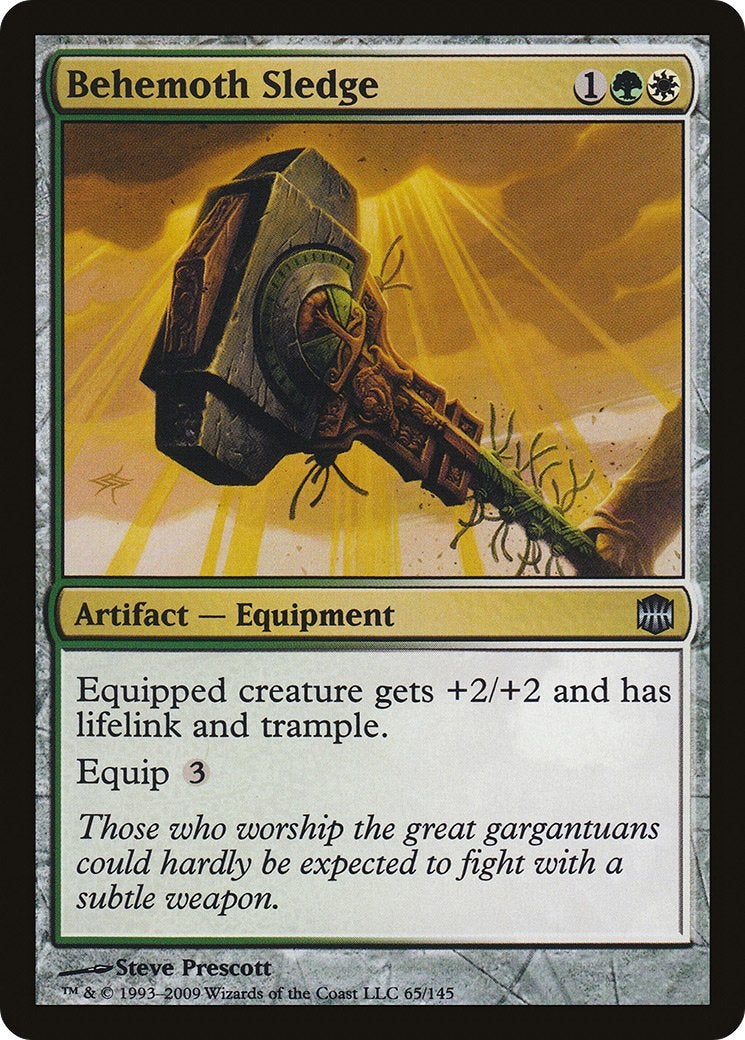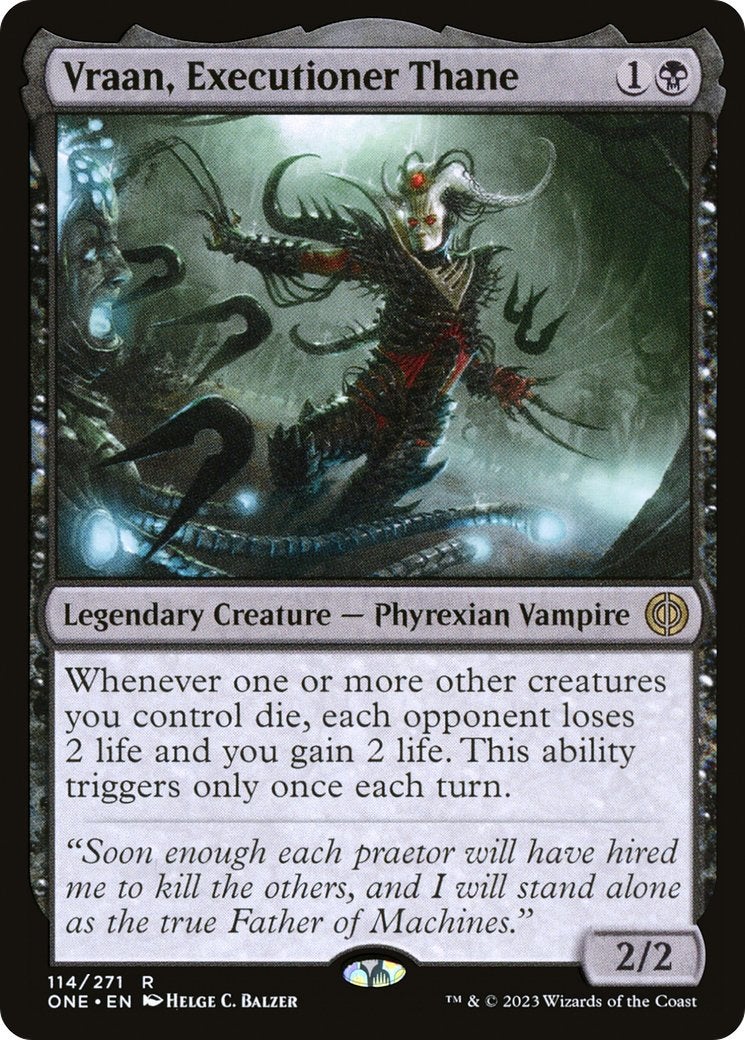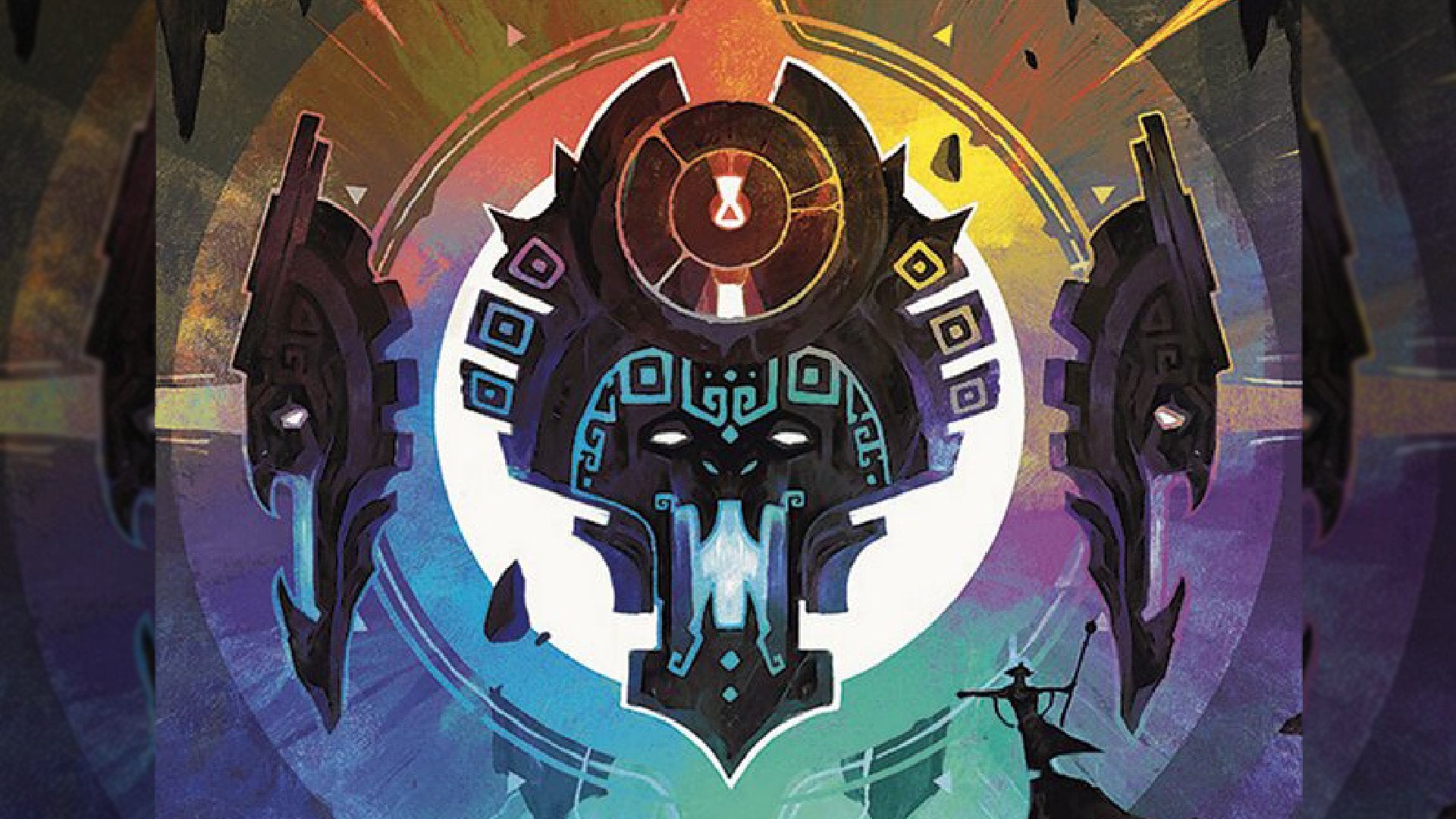![]() Key Takeaway
Key Takeaway
Mana Crypt is an Artifact in Magic: The Gathering that costs no mana to cast. During your upkeep step, you must flip a coin. If you win, nothing happens, but if you lose, your life points get reduced by three.
Regardless of the coin flip’s outcome, you can tap this Artifact to gain two colorless mana.
To offset life point loss from Mana Crypt’s upkeep requirement, insert spells into your deck that let you gain life points. Mana Crypt is worth using if you can decrease how many life points you lose.
In The Lost Caverns of Ixalan expansion of Magic: The Gathering, a few cards returned from older sets. One of the most infamous MTG returns is Mana Crypt: an Artifact with great potential…and danger. Use this card if you’re great at calling coin flips!
Table Of Contents
What Is Mana Crypt in MTG?

Mana Crypt in MTG is an Artifact that costs no mana to cast. However, casting it can make you lose life points due to Mana Crypt’s upkeep requirement:
At the beginning of your upkeep, flip a coin. If you lose the flip, Mana Crypt deals 3 damage to you.
Regardless of whether or not you lose the coin flip, Mana Crypts ability remains the same:
[Tap]: Add two colorless mana.
Before getting into the history and mechanics, be sure to read the flavor text for a fair warning about this card:
Many of the ancient civilizations beneath Ixalan were destroyed by outside forces. Others tapped into power they found they could not control.
The History of Mana Crypt
Originally, Mana Crypt is from one of the book promotions for the older Magic: The Gathering novels published under HarperPrism. These promotions ran from early 1994 to late 1995 and five cards—including Mana Crypt—were obtainable from them.
To get one of these promo cards (marked with a calligraphy brush where the expansion symbol usually goes) you would have needed to send in one of the mail-in coupons that came with some of the novels released in 1994 and 1995.
- Arena (coupon included in Arena)
- Sewers of Estark (coupon also included in Arena)
- Windseeker Centaur (coupon included in Whispering Woods)
- Giant Badger (coupon included in Shattered Chains)
- Mana Crypt (coupon included in Final Sacrifice)
Additionally, a novel published in 1995 titled The Cursed Land included a coupon that allowed readers to acquire any of the five previously released HarperPrism promo cards.
Afterward, Mana Crypt returned a few times in various promotions, sets, and expansions, such as Masters Edition II and Kaladesh Inventions.
In 2023’s The Lost Caverns of Ixalan expansion, Special Guest cards were released. All of these cards are those from older sets and expansions. Mana Crypt re-enters modern MTG through this manner with a whopping seven versions all sporting the same foreboding flavor text along with multiple artwork variations.
How to Use Mana Crypt
Before you stick Mana Crypt into your deck, consider how good you are at calling coin flips. If you have bad luck in this department, you may not enjoy using Artifact. With that said, coin flips in MTG are straightforward and follow typical conventions for this type of determiner. Here’s how coin flips are done in MTG:
- Pick any coin
- Toss the coin into the air (thumb flicks are the standard choice, but throwing the coin upwards with an open hand works as well)
- While the coin is in the air, declare whether or not you think it will land heads-up or tails-up (say “heads” or “tails” to call the outcome)
- Let the coin land on a flat surface—such as where you’re playing your MTG game (depending on your setting, catching the coin may be fine as well)
- Look at the motionless coin—if the side you declared landed upwards, you win; if not, you lose
Before you start scheming up ways to counter unfortunate results, note that you can’t act between the outcome getting revealed and taking damage from a lost coin flip. Even casting an Instant isn’t allowed. On top of that, coin flips don’t go on the Stack—unlike abilities and spells, so their results cannot be interacted with in most situations.
An Example of How Mana Crypt Works
You can only use colorless mana for the colorless requirements of a card’s mana value. For example, if you want to cast the Artifact—Equipment spell Behemoth Sledge, you can only use the colorless mana generated from Mana Crypt to pay the colorless value of Behemoth Sledge. You cannot use colorless mana to pay for the green or white mana costs.

Tips for Using Mana Crypt
If you’re running Mana Crypt in your deck, have a few life-restoring spells to counter the former’s negative effect. When in play, you’ll inevitably lose a few coin flips here and there. Since there’s no way around this damage, your best bet for success is to counter the life loss with some life gain.
Using the Lifelink ability to restore life points through attacking with Creatures is an easy and viable choice. This is especially true if you have a Lifelink Creature with Flying, Unblockable, or any other trait that lets it deal damage to your opponent more easily.
Another solid choice is to use permanents that give you life points when simple criteria are reached. Creature spells such as Vraan, Executioner Thane can help with that.

Fan favorite cards returning every once in a while is a common practice in Magic: The Gathering. The same happened for the Demonic Tutor Sorcery as well as for the Doubling Season Enchantment. Who knows what will return next…


